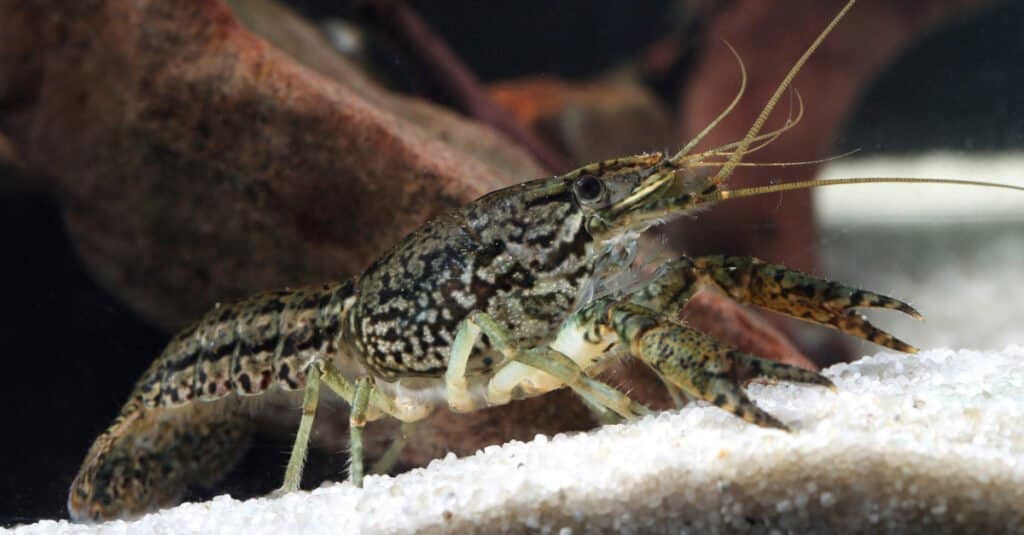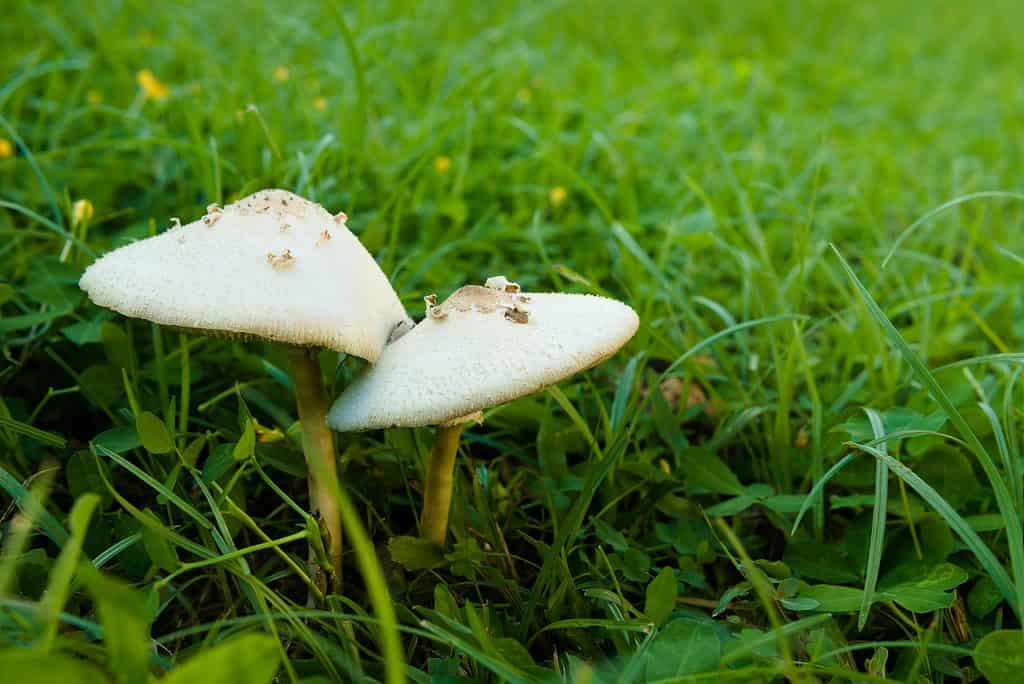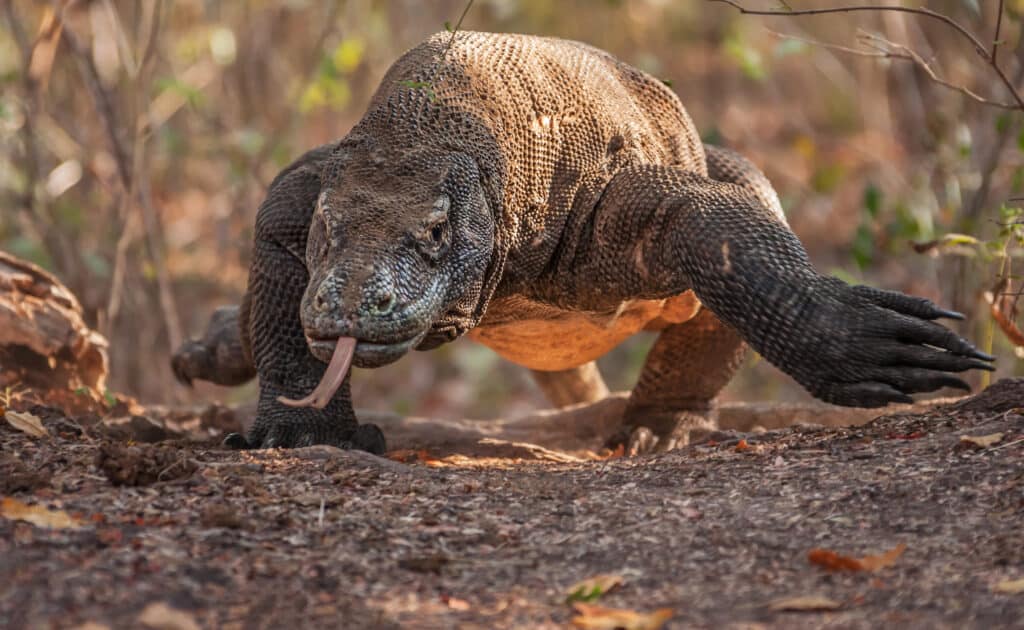Are you interested in asexual reproduction? Compared to other types of animal reproduction, the process might seem a bit complicated. However, asexual reproduction is actually quite simple. Asexual reproduction refers to a form of reproduction that excludes the joining of gametes or sex cells. Asexual reproduction does not require the mating of male and female gametes, as sexual reproduction does, in order to generate children. The asexual animal may reproduce even in the absence of a partner, producing young that are often clones of their parents. Just as well, there are many types of asexual reproduction.
In this guide, we’ll dive into everything you need to know about asexual reproduction in animals. We’ll break down a solid definition of the process, explore a few different types of asexual reproduction, and look at a few animals that typically reproduce asexually.
What is Asexual Reproduction?
The method of creating new creatures from a single organism without the fusing of gametes is known as asexual reproduction. Single-celled organisms frequently engage in this sort of reproduction. Through this process, a single parent cell splits into two or more offspring cells without any gametic fusion taking place. Clones are the resultant offspring that are both genetically and physically identical to their parents.
Asexual reproduction has a few key characteristics. To start, there is no fertilization or gamete formation. There is only one parent present. When compared to other kinds of reproduction, the process moves along relatively swiftly. There is no variety in the offspring; they are identical replicas of the parent. The offspring develop quickly as well.
Sexual Reproduction vs. Asexual Reproduction
One of the biological processes that an organism almost always engages in is reproduction. In actuality, one of a living thing’s key qualities is its capacity for reproduction. Asexual and sexual reproduction are the two main types.
When it comes to asexual reproduction, the process involves just one parent, does not need syngamy or meiosis, and produces offspring who are genetically identical to their parents. Asexual reproduction can take seven different distinct forms, which we’ll discuss in more depth later on in this guide.
Sexual reproduction involves the work of two parents. These include the paternal and maternal parent. There is syngamy, which means that during fertilization, the ovum or egg cell (the female gamete) and the sperm cell (the male gamete) fuse. Gametes must be produced through the process of meiosis. A genetically unique offspring is one that is genetically distinct from both of its parents; this is what is produced by sexual reproduction. There are only two methods of sexual reproduction: conjugation and syngamy.
The Benefits of Asexual Reproduction
Compared to sexual beings, asexual beings can produce offspring more swiftly and generally more easily. This is because just one organism is required. There’s no need to wait or look for a compatible partner. It foregoes the courting behaviors that are observed in higher sexual animal types.
Without mating, the asexual creature can generate a large number of offspring of the same species. Therefore, asexual reproduction requires less effort and time to complete. Asexuals have the benefit of colonizing a habitat more quickly than sexuals, who reproduce very slowly.
To better understand the benefits different types of asexual reproduction over sexual reproduction, it helps to look at it in terms of expense. The expense of sexual reproduction is double. If each sexual organism contributed the same amount of progeny, the size of the sexual population would stay constant throughout generations. The asexual population, on the other hand, will double in size with every generation, suggesting that it can expand more quickly than the sexual population. Asexual reproduction does not need the time or effort that sexual reproduction does for males and females to locate and copulate with one another.
The Downsides of Asexual Reproduction
Why is sexual reproduction so common in eukaryotes if asexual reproduction has less of a population expense, is simpler, and is much faster? According to research, 99.9% of eukaryotes carry out sexual reproduction over asexual reproduction. Asexual reproduction is only used by some eukaryotes if sexual reproduction is no longer an option.
For instance, it has been shown that female smalltooth sawfish breed asexually in captivity, probably as a result of the challenges in finding partners at a low population density.
Lack of Diversity and Evolution
In completely asexual species, the parent organism creates clones of itself when it reproduces. When the genetic variation within the species is taken into account, it eventually turns out to be a disadvantage. Low genetic variation is the result of all asexual reproduction. Pure asexuals do not go through genetic diversity, in contrast to sexuals, which include recombination and segregation during meiosis as well as the fusion of the sex cells with distinctive genetic material. Additionally, omitting meiotic processes can result in lower genetic variety, which could be detrimental to evolution over the long run.
For instance, the asexual clone inherits the same genetic makeup as the original parent. Because they share comparable traits and DNA, they may both be equally vulnerable in the event that they must deal with a rapid change in their environment, such as a severe disease. Or, it’s possible that neither of them have the genes necessary to render them immune to the disease, or at the very least able to survive it. They run the risk of being wiped out by the disease as a result.
This makes sexual reproduction essential for boosting the likelihood that species will be produced with genes that allow them to adapt to new environments. Higher genetic variety is achieved in sexuals by gamete fusion, autonomous assortment, and cross-pollination. Purely asexual parents, for instance, may acquire new genetic material through mutation.

Asexual animals like the marbled crayfish (pictured) tend to lack genetic diversity due to how they reproduce.
©Geza Farkas/Shutterstock.com
Types of Asexual Reproduction in Animals
Binary Fission
Prokaryotic bacteria and certain invertebrate multicellular creatures experience fission, commonly known as binary fission. An organism divides into two distinct organisms following a period of growth. Some eukaryotic unicellular creatures divide in binary by going through mitosis. In other creatures, one individual splits into two to generate new individuals. The center disk is separated during this phase in several asteroid echinoderms, for instance. Fission is a method of reproduction used by some coral polyps and some sea anemones. To put it simply, fission is when an organism simply splits itself into two separate organisms.
Budding
Asexual reproduction known as budding happens when a portion of a cell or body area grows, causing the original organism to split into two separate individuals. In some invertebrate creatures, such as corals and hydras, budding happens often. For example, in hydras, the bud develops into an adult and separates from the main body. In coral budding, the bud remains attached and grows as a component of a new colony. One of many types of asexual reproduction, budding is similar to fission, though budding involves the development of a bud that detached into a separate organism.
Vegetative Propagation
In plants, asexual reproduction takes the form of vegetative proliferation. It occurs when a brand new plant appears from vegetative components, such as unique stems, leaves, and roots. They grow after developing their own root system. Horticulturists employ this method of reproduction to spread plants that are valuable commercially.
There is no pollination involved in the process of vegetative propagation. Instead, vegetative components having a specific reproductive function are used to generate new plants. Numerous vegetative growth techniques fall into one of two categories: natural methods or artificial means. Stolons, bulbs, tubers, corms, plantlets, and root sprouts are a few examples of natural ways to propagate plants.
Spore Formation
Asexual reproduction through spores is known as sporogenesis or spore creation. Spores are latent reproductive cells that act as dispersion units, much like seeds do. The embryo created by the union of the male and female gametes is absent from the spores, which makes them different from seeds in this regard.
The thick walls of spores make them extremely resistant to a variety of adverse situations, including high temperatures and low humidity. They germinate to produce new organisms when the conditions are right. Examples of asexual organisms that reproduce through spore production include vascular plants and fungi.

Most fungi (pictured) species release spores as part of their unique life cycle.
©GlimpseDays/Shutterstock.com
Fragmentation
Fragmentation is the splitting of the body into two halves and subsequent regeneration. A new individual organism will emerge if the animal can fragment and the piece is large enough.
By fragmentation, many starfish species reproduce asexually. For instance, if a sea star’s arm is damaged, the body will grow a new sea star. Sea stars that consume clam or oyster beds have been reported to be chopped in half and thrown back into the water by fishermen in an effort to exterminate them. The two portions can each regenerate a new half, which is unfortunate for the fishermen since there will then be twice as many sea stars to eat the oysters and clams!
Turbellarians, poriferans, and annelid worms are some examples of other organisms that fragment. The size of the new organism often varies noticeably during fragmentation. Alternatively, during fission, two individuals of roughly the same size are produced.
Parthenogenesis
In asexual reproduction, parthenogenesis occurs when an egg grows into a full-fledged organism without being fertilized. Depending on the procedure and the species, the offspring might be either haploid or diploid. Invertebrates including fleas, aphids, stick insects, ants, bees, and wasps engage in parthenogenesis. Bees produce diploid females (known as workers) and haploid males (known as drones) through parthenogenesis. A queen is created if an egg is fertilized. The reproduction of the hive bees is managed by the queen bee, who also decides what kind of bees are created.
A few vertebrate species, including certain amphibians, fish, and reptiles, also reproduce by parthenogenesis. Parthenogenesis has been seen in animal species that were separated by sex in terrestrial or marine zoos, despite the fact that this one of many types of asexual reproduction is more typical in plants. When the females were separated from the males, several Komodo dragons, an individual bonnethead shark, and a single blacktip shark all gave birth to parthenogenic offspring.
Apomixis
Plants that can reproduce asexually without fertilization involved are involved in apomixis. In some plants, such as bryophytes and some ferns, the gametophyte may produce an offspring that resembles a sporophyte but has a gametophyte’s ploidy level. Apogamy is the name for this practice. Then there is the possibility that their sporophyte will produce an offspring that resembles a gametophyte but has a ploidy level of a sporophyte. This is known as apospory.
Agamospermy is the formation of seeds from unfertilized ovules. This type of apomixis occurs in flowering plants. Gametophytic apomixis as well as sporophytic apomixis are the two main forms.
When it comes to gametophytic apomixis, the gametophyte originated from a cell that did not complete meiosis and gave birth to the embryo from an unfertilized egg. Diplospory, in which the megagametophyte develops from a cell of the archesporium; and apospory, in which the megagametophyte develops from the opposite cell of the nucellus, are the two main kinds of gametophytic apomixis.
In sporophytic apomixis, also known as adventitious embryony or nucellar embryony, the embryo develops from the nucellus or an integument rather than a gametophyte.
Animals That Reproduce Asexually
Sharks
In confined female sharks that are kept apart from males for lengthy periods of time, parthenogenesis has been documented. A captive hammerhead shark provided the first known instance of parthenogenesis in a cartilaginous animal in 2001. The wild-caught shark gave birth to a live, normally developing female despite not having been in contact with a male for at least three years. No proof of a paternal genetic contribution has been discovered in the offspring.
Marbled Crayfish
When a German aquarium owner discovered a previously unidentified species of crayfish that looked to have self-cloned, the marbled crayfish made headlines for reproducing asexually in 1995. Since only females were produced, it’s possible that this crayfish is the sole asexually reproducing decapod crustacean. Since then, as an invasive species, this species of marbled crayfish have established wild populations throughout freshwater areas in Europe and Africa.
Komodo Dragons
Male Komodo dragons often fight viciously with one another during mating season. To prevent the female from mating with anybody else, some males may even stay with her for a few days after the initial encounter. Similar to sharks, Komodo dragons were not previously believed to be capable of asexual reproduction. In 2006, a handful of eggs deposited by a Komodo dragon that had never interacted with a man were examined for her DNA.

Komodo dragons (pictured) are perhaps the most famous unlikely animal to reproduce asexually.
©iStock.com/kiwisoul
Molly Fish
Amazon molly fish are a freshwater fish species that are only found in Mexico and Texas. They have always reproduced asexually as far as we are aware. This would ordinarily would put a species in danger of extinction owing to gene loss. Asexual reproduction has, however, significantly benefited this specific species of fish.
The genomes of the Amazon molly fish and two closely related species were analyzed in a 2018 stud. It was discovered that the mollies were not only surviving, but thriving. Despite being entirely female, scientists came to the conclusion that the molly genome exhibited significant levels of diversity. They showed no generalized indicators of genomic degradation.
Starfish
Starfish can reproduce asexually and sexually, but with an intriguing variation. Some starfish use fission to reproduce asexually, which means the animal literally splits in two to create two whole animals. Starfish occasionally choose to break off one of their arms, regenerating the lost portion while the damaged portion develops into a brand-new starfish.
Isn’t asexual reproduction fascinating? There are many animals that reproduce this way, though most living organisms utilize sexual reproduction in order to continue evolving. Nature always finds a way!
The photo featured at the top of this post is © iStock.com/Damocean
Thank you for reading! Have some feedback for us? Contact the AZ Animals editorial team.






